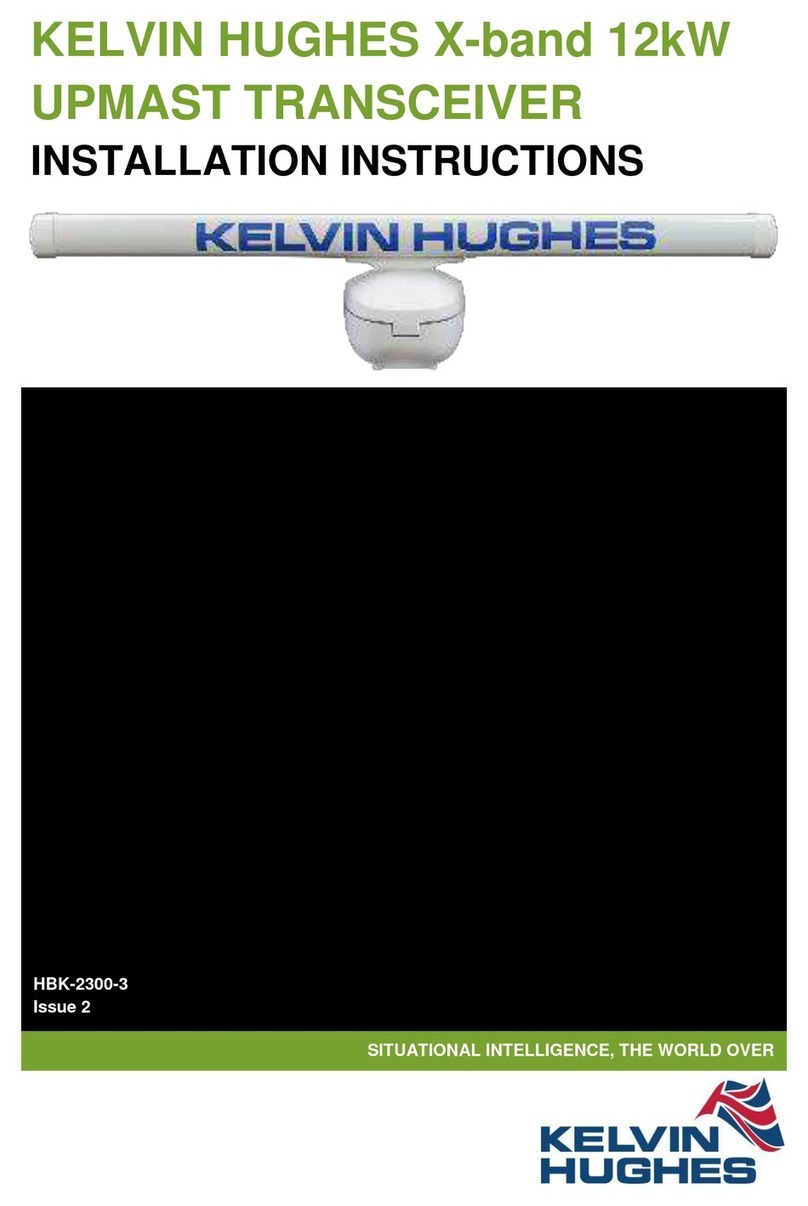
CHAPTER 1
INTRODUCTION
GENERAL
1 This technical manual covers the low speed transceiver and turning mechanism
CAE-A30/7 and the high speed transceiver and turning mechanism CAE-A30/8. For
information on earlier versions of the equipment refer to Publication KH 1203.
2 The transceiver may be interfaced with any of the Nucleus 2 and 3 Series displays via a
parallel interface or the NUCLEUS 3 series displays only via a Controller Access
Network (CAN) Bus link, the CANbus link being interfaced to the transceiver via a Transmitter
Interface Unit (TIU). When the parallel interface is used the Low Speed Turning Mechanism
(CAE-A30/7) uses +27V power supply from the display unit to drive the turning motor, whereas
the High Speed Turning Mechanism (CAE-A30/8) uses an external 40V Power Supply Unit
which is bulkhead mounted below deck. When the CANbus interface is used, the power supplies
are provided by the Transmitter Interface Unit for both low and high speed turning mechanisms
(the voltage can be set to meet the requirement of the specific turning mechanism).
3 Forward planning for positioning the various units of the Radar must be made before any
installation work is carried out. A full survey is required in order to establish the ship’s
fitment. This may be arranged with the Technical Department of Kelvin Hughes or one of the
approved Agencies. Details of Agencies worldwide can be found in Publication KH 401. Kelvin
Hughes, or appointed agents, contract to supply and install the equipment. It is recommended
that the installation is made by a fully qualified Kelvin Hughes Radar Engineer.
Compass Safe Distances
4 Compass safe distances are stated on labels on all units and are as follows:
Grade I (0.25 degree) Grade II (1 degree)
MkV Transceiver 3.0m 1.8m
Transceiver Unit Siting
5 The Transceiver is to be mounted on a rigid platform, which is positioned so that the
rotating antenna is clear of other structures.
6 The Transceiver/Antenna assembly should be installed in a position that eliminates or
minimises blind arcs caused by obstructions, e.g. masts, etc.
7 The primary consideration must be the strength of the support for the
Transceiver/Antenna assembly. Details of this requirement are described in the
following sub-paragraphs :
(1) The antenna must be mounted more than 3ft (914mm) above any flat surface
greater than the diameter swept by the antenna. It must not be positioned in close
proximity of any magnetic compass or D/F aerial etc.
KH1207
Chapter 1
mkv 3 Amdt 3 (Mar 01)























